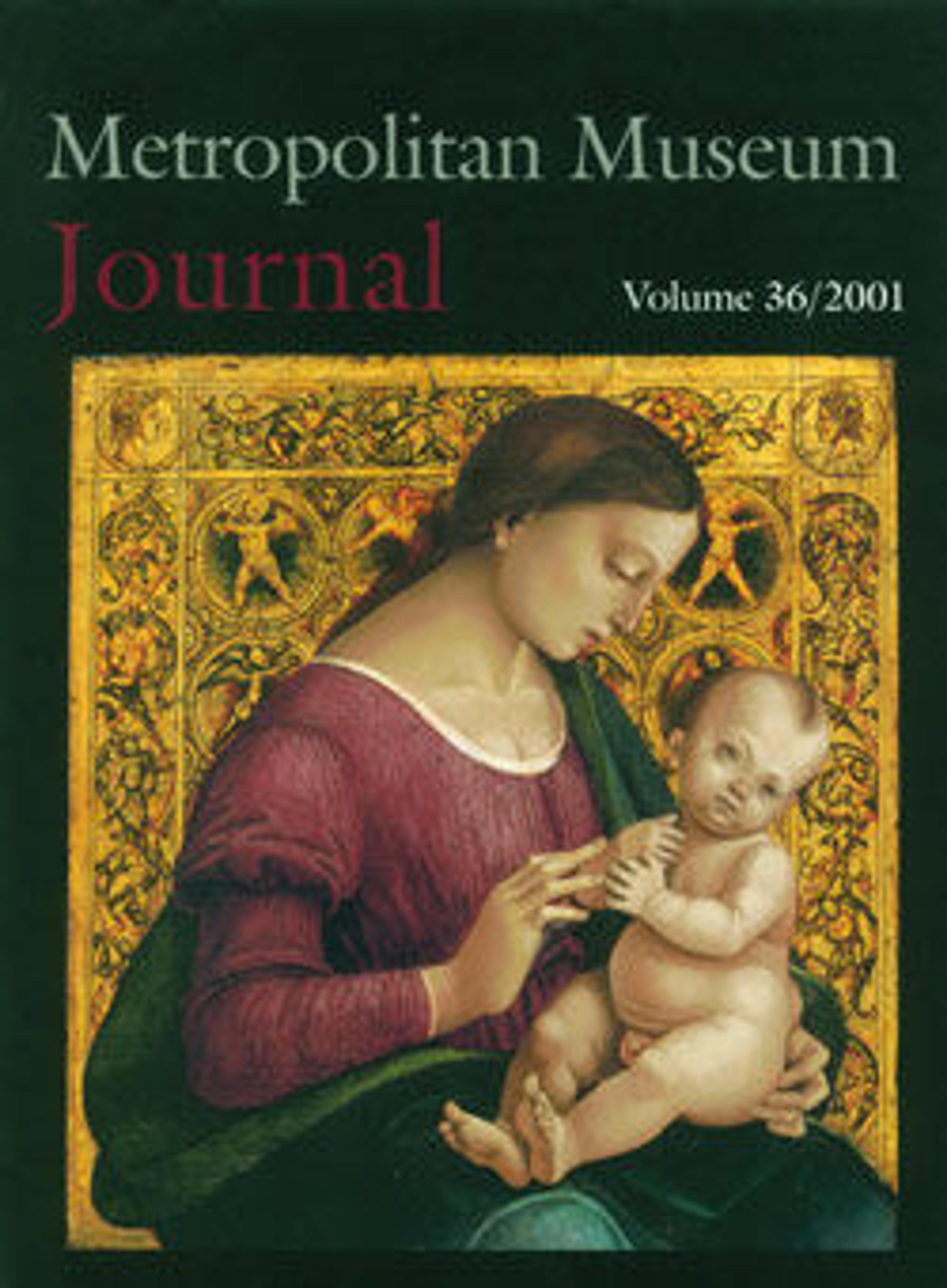Glass lentoid aryballos (perfume bottle)
Translucent honey brown, with same color handles and cord; trails and blobs in opaque white.
Broad flat rim-disk with rounded edge and radiating tooling marks on upper surface; slender cylindrical neck, tapering downwards; sloping shoulder; globular lentoid body; convex bottom; two large vertical ring handles attached to shoulder.
A trail attached at edge of rim-disk; a circular marvered blob applied to both faces of body; a large cord, twisted together with a white trail, attached under handles runs down sides and across bottom.
Broken and repaired, with large chip in one side of body; some pitting, large patches of milky white weathering and iridescence.
Together with the other two similar aryballoi displayed here (17.194.309 and 30.115.7), this bottle belongs to a small group of core-formed glass that may have been made in southern Italy, Sicily, or even Carthage. It has also been suggested that these bottles may have been worn as amuletic pendants around the neck.
Broad flat rim-disk with rounded edge and radiating tooling marks on upper surface; slender cylindrical neck, tapering downwards; sloping shoulder; globular lentoid body; convex bottom; two large vertical ring handles attached to shoulder.
A trail attached at edge of rim-disk; a circular marvered blob applied to both faces of body; a large cord, twisted together with a white trail, attached under handles runs down sides and across bottom.
Broken and repaired, with large chip in one side of body; some pitting, large patches of milky white weathering and iridescence.
Together with the other two similar aryballoi displayed here (17.194.309 and 30.115.7), this bottle belongs to a small group of core-formed glass that may have been made in southern Italy, Sicily, or even Carthage. It has also been suggested that these bottles may have been worn as amuletic pendants around the neck.
Artwork Details
- Title: Glass lentoid aryballos (perfume bottle)
- Period: Late Classical or Hellenistic
- Date: 4th–3rd century BCE
- Culture: Greek
- Medium: Glass; core-formed, Group II
- Dimensions: H.:1 15/16 in. (5 cm); D.:1 5/8 in. (4.2 cm)
- Classification: Glass
- Credit Line: Edward C. Moore Collection, Bequest of Edward C. Moore, 1891
- Object Number: 91.1.1367
- Curatorial Department: Greek and Roman Art
More Artwork
Research Resources
The Met provides unparalleled resources for research and welcomes an international community of students and scholars. The Met's Open Access API is where creators and researchers can connect to the The Met collection. Open Access data and public domain images are available for unrestricted commercial and noncommercial use without permission or fee.
To request images under copyright and other restrictions, please use this Image Request form.
Feedback
We continue to research and examine historical and cultural context for objects in The Met collection. If you have comments or questions about this object record, please complete and submit this form. The Museum looks forward to receiving your comments.
